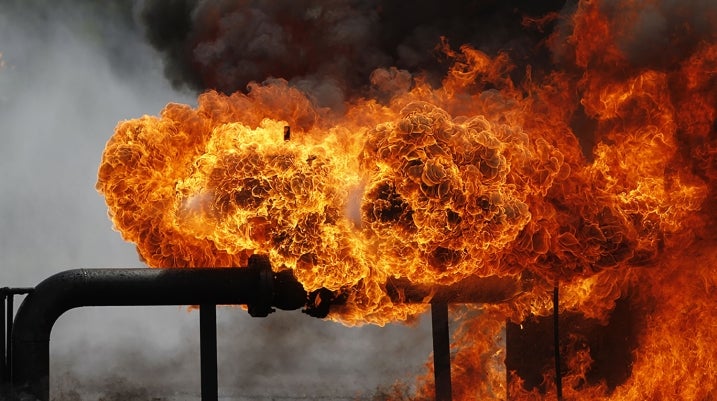Explosions: By the Numbers

Explosions occur when a substance ignites or is otherwise supercharged and expands rapidly with an immense release of energy. They can occur naturally but are much more common among man-made devices, particularly gas lines. These conduits are everywhere: There are well over 2.5 million miles of natural gas and flammable-liquid pipelines in the United States, according to the Pipeline and Hazardous Materials Safety Administration (PHMSA). That’s more than five round trips to the moon and back. With that much flammable material around us, accidents are bound to happen, and explosions occur with shocking regularity.
How Often Do Gas Explosions Occur?
Over the 20-year period through 2018, there were 646 gas distribution line accidents in the U.S., according to PHMSA figures. Distribution lines are the small pipes that feed homes and businesses. Those accidents injured 967 people during that time period, with 221 fatalities. On an average yearly basis, that’s approximately 25 incidents, 50 injuries, and 10 deaths.
However, these numbers may underreport the actual frequency of explosions. On Sept. 13, 2018, one man was killed and over 20 others were injured during a series of explosions in Lawrence, Andover, and North Andover in Massachusetts. While up to 80 homes and businesses were affected, the PHMSA listed this as one event. The nonprofit Fractracker Alliance analyzed PHMSA data from 2010 to 2018 and found that there were 1.7 pipeline accidents per day, leading to an estimated $1.3 million in property damage. This included a pipeline fire every four days, an explosion every 11 days, an injury every five days, and a fatality every 26 days. These statistics suggest that even if conservative, such incidents are on the rise.
What Kind of Injuries Do Explosions Cause?
Explosions are extremely violent events and pose great danger to anyone in the vicinity. Related injuries fall under four general categories:
- Primary: These injuries occur when an explosion’s shock wave moves through the body, primarily affecting air-filled organs such as the lungs, stomach, eyes, ears, and brain.
- Secondary: This type of trauma involves debris displaced by the blast and accounts for the majority of injuries in explosions. Flying objects can travel great distances and move much faster than a speeding bullet.
- Tertiary: These wounds result from a person being thrown by a blast or if a structure collapses on them, potentially causing blunt force or penetrating trauma.
- Quaternary: This category includes all injuries not cited above, such as burns, lung complications due to smoke or dust, toxic or biological illness, exposure, and even psychological trauma.
How an Explosion Personal Injury Attorney Can Help
Injuries from explosions can be severe or fatal, and the costs associated with medical care, lost wages, and funerals can be astronomical. Insurance companies often attempt to blame individuals for causing blasts even when a business or gas distributor is likely the negligent party. If you’ve been affected by an explosion, do not fight this battle alone. Having a Morgan & Morgan personal injury lawyer in your corner can make all the difference in securing the compensation you deserve.
If we move forward with your case, we’ll handle every step of the process. There is no upfront cost, and it’s free unless we win. Fill out a case evaluation today.
Injured? Getting the compensation you deserve starts here.

Injured?
Not sure what to do next?
We'll guide you through everything you need to know.